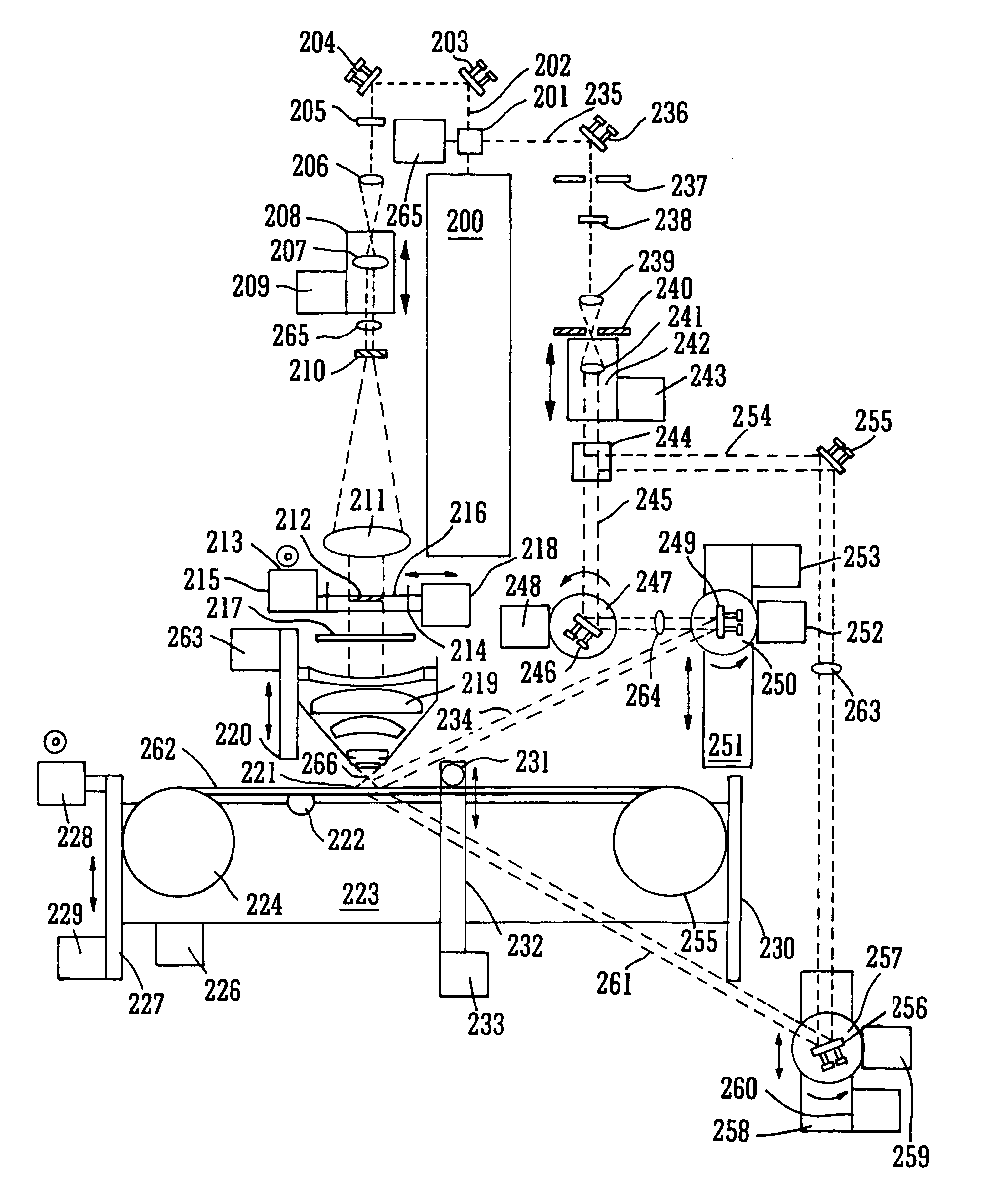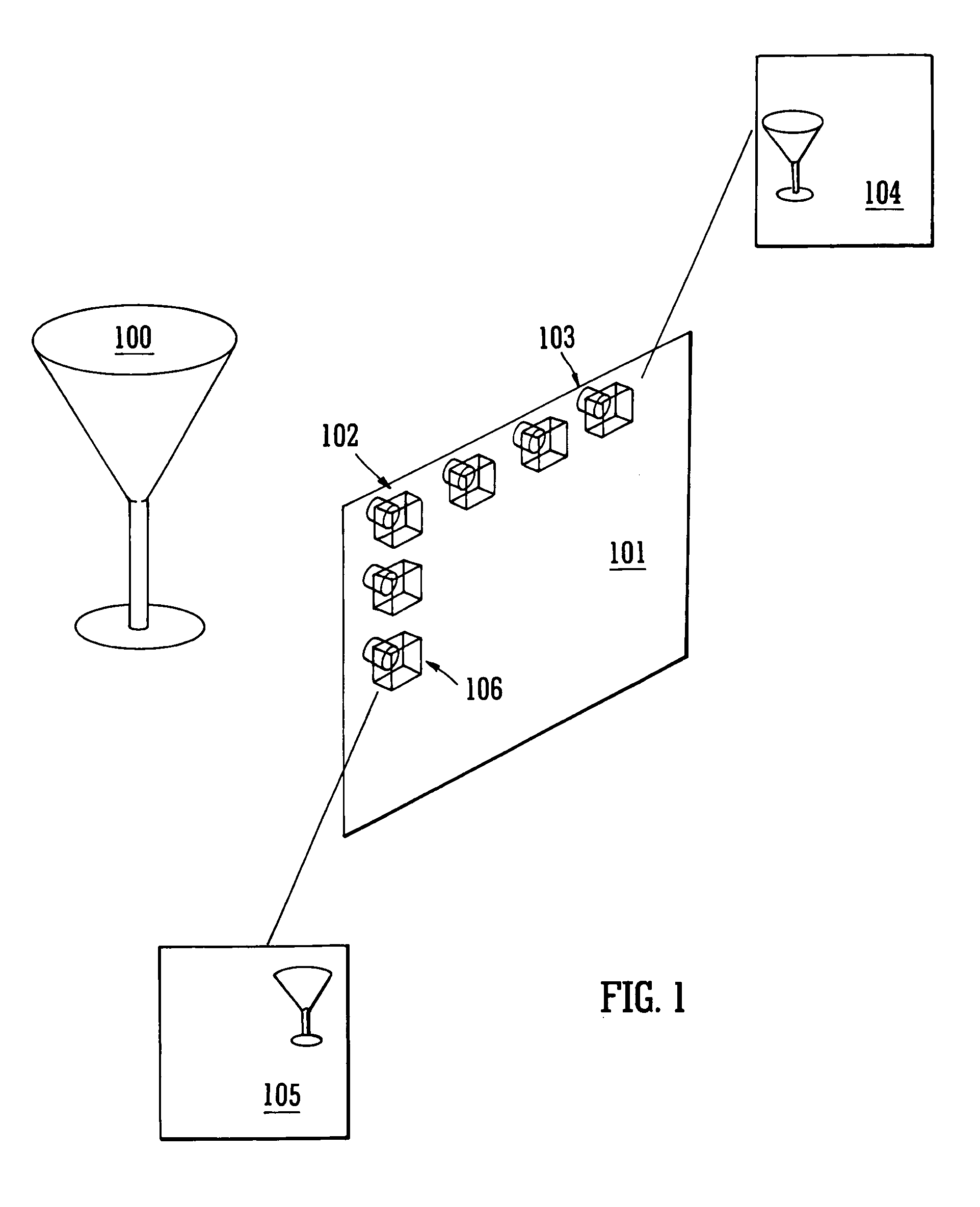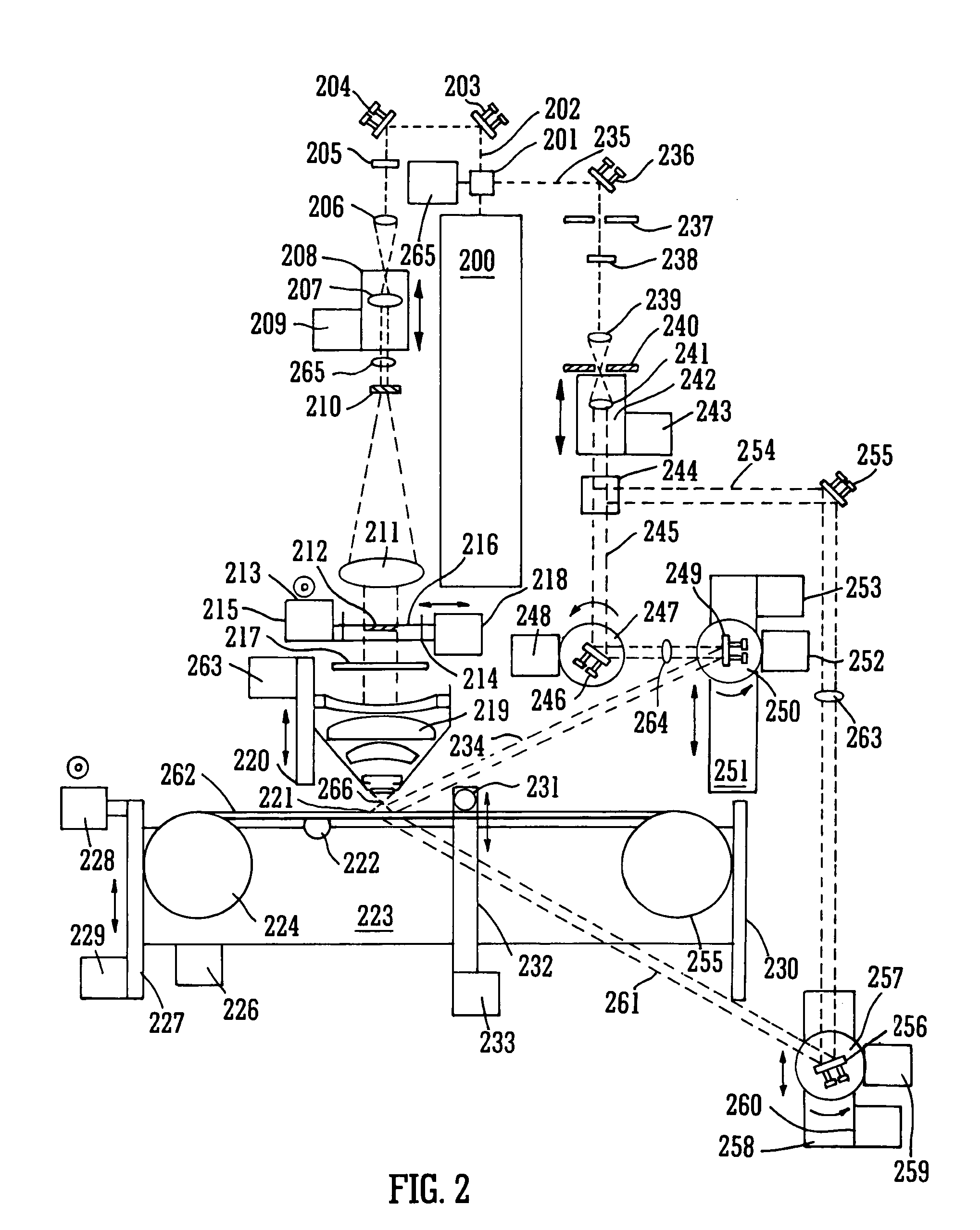Holographic printer
a holographic printer and printer technology, applied in the field of holographic printers, can solve the problems of loss of hologram image depth, redundant and wacky apertures of the prior art, and achieve the effects of better objective limiting resolution, better objective field of view, and better performan
- Summary
- Abstract
- Description
- Claims
- Application Information
AI Technical Summary
Benefits of technology
Problems solved by technology
Method used
Image
Examples
Embodiment Construction
5.1 Fundamental Image Data Required
[0236]In one embodiment of this invention a computer is used to generate a three dimensional model of an object using a standard commercial computer program. Such computer programs can nowadays produce very lifelike models using a variety of sophisticated rendering processes that mimic real life effects. In addition advances in computer technology have now seen the calculation times, required for such programs to run, dramatically decreased. Three dimensional scanners using Moire or other principles now permit the incorporation of real world 3-D images in such computer models. The storage memory required for such 3-D models is largely dependent on the texture maps used therein and hence computer files representing such 3-D models are usually relatively small and may be transmitted over the internet easily. In the preferred embodiment of this invention said 3-D computer models are used to generate a series of 2-D camera views from a virtual viewing ...
PUM
 Login to View More
Login to View More Abstract
Description
Claims
Application Information
 Login to View More
Login to View More - R&D
- Intellectual Property
- Life Sciences
- Materials
- Tech Scout
- Unparalleled Data Quality
- Higher Quality Content
- 60% Fewer Hallucinations
Browse by: Latest US Patents, China's latest patents, Technical Efficacy Thesaurus, Application Domain, Technology Topic, Popular Technical Reports.
© 2025 PatSnap. All rights reserved.Legal|Privacy policy|Modern Slavery Act Transparency Statement|Sitemap|About US| Contact US: help@patsnap.com



